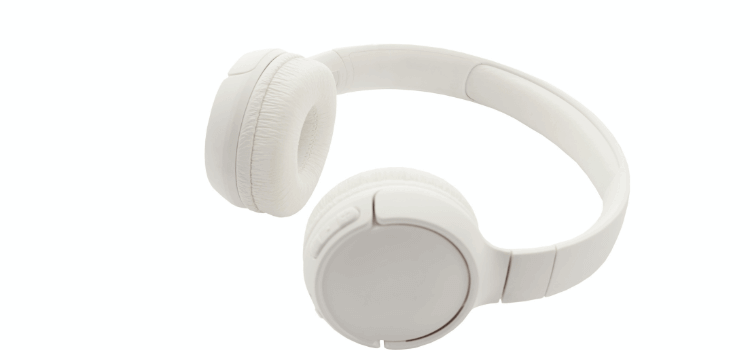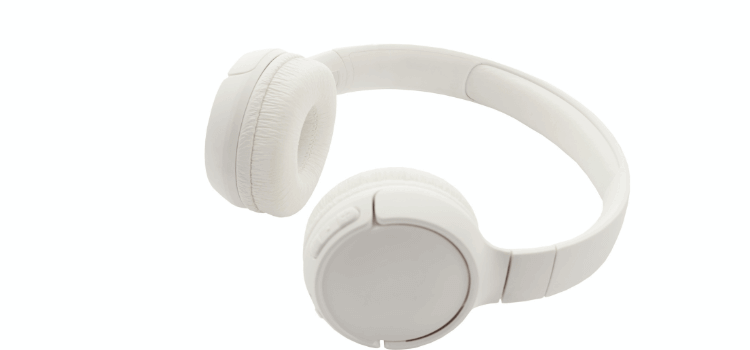As an Amazon Associate I earn from qualifying purchases.
If you’re experiencing frequent disconnections with your wired headphones, there could be a few possible causes. First, checking the connection between your headphones and your device is essential. Ensure the plug is securely inserted, and no debris or dust blocks the connection. If the connection is secure, then the headphones themselves are the cause of the issue. Check the wires for any injury, such as daunt or loose connections. You should check the headphone’s settings if the cables are intact.Confirm the volume is set to an correct level and the headphones are configured correctly for your device. If all else fails, you may need to contact the manufacturer or retailer for a replacement pair of headphones.

Why do my wired headphones keep disconnecting
In this post, we look at why wired headphones can disconnect and what you can do to prevent it from happening. We casing the most common causes and provide answer to help keep your headphones connected.
Check the headphone cable for any damage.
Make sure that the wires are not frayed or damaged in any way. See for any symbol of wear and break off or kinks in the wires.When you discover any, replace the cable instantly. It is essential to inspect your headphones regularly to ensure they are in good condition. Review the plug, jack, and other connections for any symbol of wear or injury. Hear for any abnormal noice like this as flirt, crackling, or buzzing. If you hear any, it is best to get the headphones checked by a technician. Make sure that any sound isolation material is intact and not deteriorated. Ensure that the padding and cushioning are still in good agreement, as this can feeling the sound quality. Always use your headphones responsibly and remove them when not in use. Assure the cable is adequately harden when not in conduct to avoid extemporary injury.
Check the headphone jack for any dirt or debris.
It is essential to check the headphone jack for any soil or ruins stop the port. This debris can diminish the audio quality and can even cause damage to your audio device. Soil, dust, and other ruins can also reason a fixed interference that can be annoying. Check the headphone jack periodically for any dirt or debris to ensure your headphones perform optimally.
You can quickly check the headphone jack with a cotton swab or a small brush. Gently clean and lightly scrape away any dirt or debris that you find. Ensure you also check under any covers or lids of the headphone jack for any debris. Once you have completed cleaning, ensure the headphone jack is completely dry before you plug in your headphones again.
By checking your headphone jack regularly, you can ensure that your audio quality is not compromised and that your device is protected from damage.
Check the audio settings on your device.
This is important to ensure you get the best sound from your device. Different audio settings can feeling the in total quality and limpidity of the sound. Trunting on the type of instrument you’re treat, you may have other options available.
Supposing you are treating a laptop or desktop computer, check the sound settings in the conduct method. You can normally discover the audio settings in the Control Panel. You can change the volume, credit, and choices, such as stereo or mono sound. You can also pick the class of speakers or headphones you are operating.
You must fit the audio settings in the device’s menu if you’re operating a mobile device. You can set the volume, balance, and other audio settings here. It’s essential to ensure the settings are set correctly for your device.
If you’re using headphones or a headset, you’ll want to ensure the audio settings are appropriately adjusted. This includes providing the headset is plugged in correctly and the audio settings are set to the correct levels.
In general, checking your device’s audio settings is important to confirm everything is set up perfectly. This will help ensure you get the best sound possible from your device.

Check the power settings on your device.
It is essential to ensure your device is set to the correct power settings for optimal performance. There may be a variety of different power settings available on your device, depending on the type of device you have. Some power settings are designed to save energy or extend battery life, while others are designed to maximize the device’s performance. Inspect the power settings regularly to confirm you get the most out of your gadget. Also, be aware that different applications may have different power settings that must be adjusted to work correctly. Finally, keep the power settings on your device updated to ensure that your device is always running at its best.
Try using a different pair of headphones.
Differing types of headphones can give you varying levels of sound quality and comfort. In-ear headphones are fabulous for blocking out exterior noise, while around-ear headphones are better for playing music loudly. Many people find that noise-canceling headphones are ideal for blocking out surrounding noise. Listen to music in a comfortable and quiet environment when trying out the headphones. Modify the volume to a comfortable status and notice if the headphones accurately multiply the sounds. It is likewise important to be confident that the headphones suit comfortably. The headphones can be uncomfortable and cause pain if they stand too tight. When you are trying out different headphones, make sure to take into account the audio quality, comfort level, and fit. With the right pair of headphones, you can enjoy the songs in your music library with better quality and comfort.
Check for software or driver updates.
Updating your computer’s software and drivers is essential for running your system smoothly and avoiding potential problems. Confirming that your programs and drivers are up to date can prevent unexpected system crashes, slowdowns, or other issues. You should check for software and driver updates at least once per month. Software and driver updates can be found on the manufacturers’ websites and the Windows Update tool. Many programs can check for updates automatically, so take advantage of this feature. Additionally, back up your computer before updating it if something goes wrong. Updating your software and drivers will help keep your system secure and running smoothly.

Try a different audio source.
If you want to add creative flair to your listening knowledge, why not try a different audio source? Try a separate speaker system, a new streaming service, or another audio device. You could even try another type of noise-cancelling headphones. Listening to music and audio from various sources can help you appreciate different kinds of music and sounds. It can also help you understand the subtle nuances of other audio sources, which can make a difference in how you experience music and sounds.
Additionally, different speakers and audio devices can provide other sound qualities. For example, vinyl records have a unique sound quality that can’t be replicated with digital audio. The same goes for vintage speakers or audio equipment passed down through generations. Experiencing music and audio from different sources can help you appreciate the sonic qualities of other audio sources. So, why try an additional audio source and see what new music and sounds you can discover?
Check for any loose connections.
Around the power source, such as power cords, power strips, and wall outlets. Look for any signs of wear, corrosion, exposed wires, or loose terminals. If you find any of these problems, do not attempt to fix them yourself; take the device to a qualified technician. Additionally, ensure all the power switches are in the “on” position and all surge strips and power bars are switched to the “on” position. If the power is intermittent, reset the circuit breaker or check the fuse box for a blown fuse. If there is a power shortage in your area, unplug the device and contact your utility company. Check the power cord for any signs of fraying or cracks, and make sure it is tightly plugged into the power outlet. If any of these problems are identified, replace the power cord. Lastly, make sure any extension cords are rated for the device you are using.
Conclusion
In conclusion, there are several possible causes as to why your wired headphones are randomly disconnecting. It could be due to a loose connection, a faulty cable, a worn-out plug, or a problem with the device itself. If the matter continues, consulting a professional for an exact diagnosis and repair is most useful. It is important to study the manufacturer’s warranty before trying any restorations. Remember that valid care of your audio devices can help prevent these problems from transpiring.
Amazon and the Amazon logo are trademarks of Amazon.com, Inc, or its affiliates.